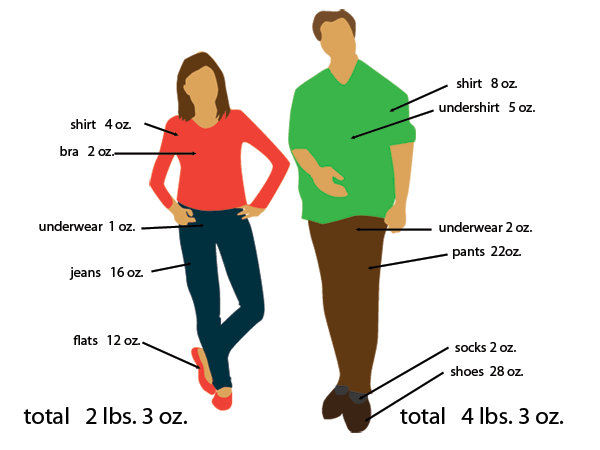How Much Weight Do Clothes Add? Understanding the Impact of Clothing on Body Weight
When stepping on a scale, many individuals wonder about the accuracy of their body weight, considering the additional weight of the clothes they are wearing. Clothing can indeed add to your body weight, but the amount varies based on the type of garments and materials you wear. In this comprehensive guide, we will explore the impact of clothing on body weight, the factors influencing this weight addition, and how to account for it for a more accurate understanding of your actual weight.
1. The Effect of Clothing on Body Weight

Clothing on Body Weight
Before delving into the specifics, it's essential to understand how clothing can influence body weight:
a. Clothing Material:
The type of fabric and material used in your clothing can significantly affect how much weight it adds.
b. Layering:
Wearing multiple layers of clothing can increase the total weight added to your body.
c. Footwear:
Don't forget to consider the weight of your shoes, as they can add a notable amount to your overall weight.
2. Weight of Common Clothing Items
To gain a better perspective, let's explore the approximate weight of some common clothing items:
a. T-Shirt:
A standard cotton T-shirt typically weighs around 4 to 8 ounces (113 to 227 grams).
b. Jeans:
A pair of denim jeans can weigh between 12 to 16 ounces (340 to 454 grams) or more, depending on the size and thickness.
c. Sweater:
A light to medium-weight sweater may weigh around 8 to 12 ounces (227 to 340 grams).
d. Shoes:
The weight of shoes varies significantly based on the style, with athletic shoes usually weighing between 1 to 2 pounds (0.45 to 0.9 kilograms) and heavier boots weighing even more.
3. Factors Affecting Clothing Weight

Clothing Weight
The actual weight added by clothing can fluctuate due to various factors:
a. Fabric Type:
Different fabrics have varying densities, with heavier fabrics contributing more weight.
b. Garment Size:
Larger-sized clothing may have more fabric and, therefore, add more weight.
c. Layering:
Wearing multiple layers can increase the total weight added by clothing.
d. Seasonal Clothing:
Winter clothing tends to be thicker and heavier, while summer clothing is generally lighter.
4. Accounting for Clothing Weight on the Scale
a. Before Weighing:
If you want a more accurate measurement of your body weight, weigh yourself without clothing or with minimal clothing, such as lightweight undergarments.
b. Estimate Clothing Weight:
If you prefer not to weigh yourself without clothing, you can estimate the weight of your clothing based on the average weight of the items you are wearing.
c. Subtract Clothing Weight:
After weighing yourself with clothing, you can subtract the estimated weight of your clothing to arrive at a more precise body weight measurement.
5. The Importance of Consistency
For accurate tracking of your weight, it's crucial to maintain consistency in your weighing routine:
a. Weigh at the Same Time:
Weigh yourself at the same time each day to account for natural weight fluctuations.
b. Use the Same Scale:
Stick to one scale for your measurements to maintain consistent readings.
6. Implications for Weight Management
a. Daily Weight Fluctuations:
Keep in mind that clothing weight can cause minor daily fluctuations in your measured weight.
b. Focus on Trends:
Rather than obsessing over daily fluctuations, focus on long-term weight trends for a more meaningful assessment of your weight management progress.
7. Tips for Accurate Weight Measurement
a. Consider Nude Weighing:
For the most accurate weight measurement, consider weighing yourself nude or with minimal clothing.
b. Use a Weighted Blanket:
If you prefer wearing clothing while weighing yourself, using a weighted blanket during the measurement can help provide a more stable and consistent weight.
Understanding the impact of clothing on body weight is essential for obtaining accurate measurements and tracking your weight management progress effectively. Clothing weight can vary based on the type of garments, fabric, and layering you choose. By being mindful of these factors and accounting for clothing weight during your weigh-ins, you can achieve a more accurate understanding of your actual body weight. Remember to focus on long-term trends rather than daily fluctuations and maintain consistency in your weighing routine for the most meaningful weight management results.